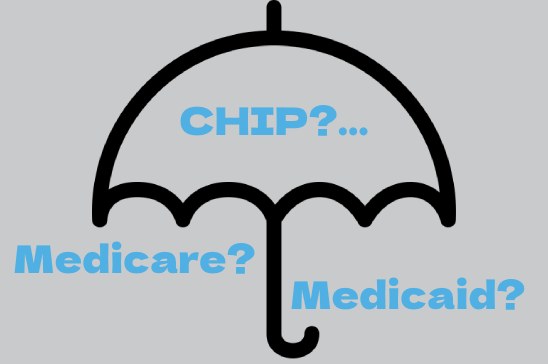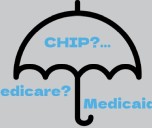
Insurance is difficult to understand for a lot of people. It’s more so when contemplating state-sponsored insurance such as Medicaid and CHIP or government insurance like Medicare. Here’s what it’s all about.
What Is Medicaid?
Medicaid is an insurance program offered by the states to cover low-income families or individuals. You’ll go online to your state’s Human Resources website to enroll. You’ll be asked to provide proof of identity, residence, power bills, rent, and income.
When you’re approved, you will use your Medicaid coverage for any health concerns, maintenance, and wellness. This includes dentistry. Adult Medicaid users will need to check their state’s rules and requirements to ascertain if Medicaid covers any or all aspects of dentistry.
Generally, Medicaid covers root canals, cleaning, dental exams, crowns, fillings, and orthodontic consults. Only 30 states allow dental coverage by Medicaid. Federal restrictions on insurance have been pretty severe in recent years, so it no longer pays dentists to accept it. You’ll need to ask which dentists accept Medicaid.
What Is CHIP?
CHIP stands for Children’s Health Insurance Program. It’s administered by the states, but only if dental necessity is determined by a medical professional. It must cover early and periodic screening, diagnostic, and treatment or EPSDT.
States are required to administer this at certain intervals to determine medical necessity in the form of infection or missing teeth. A separate CHIP account must be obtained for a child to maintain oral health, restore lost or broken teeth, and handle emergencies.
Are Medicaid And CHIP The Same Thing?
No. CHIP falls in the Medicaid category but is a separate entity in and of itself. It was meant to cover low-income children who fall outside the income parameters for Medicaid. While Medicaid is required to cover EPSDT, CHIP is not. Additionally, states may design coverage parameters for CHIP that Medicaid can’t cover.
That’s due to the matching funds by the federal government to the states. Medicaid receives 56 percent matching funds while CHIP receives 71 percent. The snag to that is that there are no pre-established limits for Medicaid or caps, while CHIP funds have a cap. States are restricted to their particular allotment of money.
Is CHIP Part Of Medicare Or Medicaid?
CHIP falls under the category of Medicaid and is administered by the states. Medicare is federally funded and administered. It’s meant to cover the health and wellness of seniors 65 and older, the disabled, and those with end-stage renal disease or complete kidney failure that calls for dialysis or a transplant.
What Is Medicare?
We’ve explained the basics of Medicare, but not that you automatically get it when you’re 65 years old. If this automatic thing doesn’t happen, you’ll have three months before your 65th birthday, the month of your birthday, and three months afterward to sign up for Medicare.
Medicare consists of Parts A, B, and D. Part A is the hospitalization portion of Medicare. You’ll pay no premium each month, although there will be a $1,556 deductible in 2022 to meet. Part B is the doctor's office part of it, and your $170 premium in 2022 will come out of your disability or Social Security check.
Part D is the prescription drug portion of Medicare. It’s not included in Parts A and B, but must be paid for through private insurance. Its premiums are mostly below $50 per month and cover what’s on an unchanging (for the most part) list of medications. Some low-income people will receive help paying for their medications through a charitable concern associated with Part D.
Here’s where Medicare is confusing to lots of people. You have Medicare Part C or a typical HMO to cover what Parts A and B don’t cover. You have Medigap plans A through the good Lord alone knows what letter it is this year. Medigap covers what Parts A and B don’t, too, and that includes premiums and deductibles. Part C doesn’t do that, but it does other good things.
What Is Medicare Part C?
Also known as a Medicare Advantage Plan, Medicare Part C is like an ordinary HMO or PPO. It must cover Medicare Parts A, B, and D just like Original Medicare.. Some health plans cover hearing, sight, and dental, while others don’t. Part C is only carried through private insurance providers. These providers dictate to some extent what Part C will cover and its premiums.
Some choose Advantage plans for the extras some of them offer. Some offer fitness program memberships, transportation to doctor offices, over-the-counter drugs, as well as health and wellness programs and services.
Some Advantage plans can customize their policies to benefit chronically ill patients for treatment of particular conditions or diseases. These people should consult their preferred provider for rules and regulations to see if they qualify and what the limitations might be before signing up.
Also check with your preferred provider for broader rules that change each year such as:
- Needing a referral to a specialist
- In-network doctors, non-urgent
- What the out-of-pocket charges will be this year (they change year-to-year.)
What Is Medicare Part D?
Part D is prescription drug coverage and comes with Original Medicare. There are two ways to get it, and both are through private insurance providers: in Original Medicare, and in an Advantage Plan.
However you get Part D, it must cover both the generic and brand name medications and insulin necessary to most seniors. Not only that, but it must cover anti-cancer drugs, antidepressants, antipsychotic medicines, HIV/AIDS treatments, and anticonvulsive seizure treatments.
Vaccines must be covered under Part D such as shots for shingles, and pneumonia shots, none of which are covered by Part B.
What Part D doesn’t cover is anything over-the-counter like cold and flu preparations, vitamins, pain relievers, weight loss or gain preparations, sexual preparations for any reason, and hair growth preparations.
What Are Medigap Plans?
Medigap plans are sold by private insurance providers and covers what Original Medicare doesn’t cover. They primarily cover Parts A and B premiums, deductibles, and co-payments or co-insurance. Medicare will pay its part, and then Medigap takes over to pay the remainder. Some plans even cover medical care when you travel overseas.
Some things to remember about Medigap plans are as follows:
- You must have Parts A and B
- You will pay your private insurance carrier the premium each month for your Medigap plan in addition to the premium for your Part B
- You can’t have an Advantage plan and a Medigap plan at the same time
- If you want Part D or drug coverage, you must buy a Part D plan along with your Medigap plan. Medigap plans do not cover drugs
- Medigap plans are renewable each year as long as you pay your premiums and even if you become seriously ill
- Medigap plans only cover you. If your spouse wants a Medigap policy, s/he’ll have to buy one for him/herself
- Medigap plans don’t cover long-term care, sight, hearing, dental, hearing aids, or private nurses.
Types Of Medigap Plans
Medigap plans offered are Plans A, B, C, D, F, G, K, L, M, and N:
- All offer Part A co-insurance and hospital costs up to an extra year after Medicare pays its part
- All offer Part B co-payments
- All offer the first three pints of blood except plans K and L. Plan K pays half of the cost. Plan L pays 75 percent of the cost
- All offer Part A hospice care co-payments except plans K and L. Plan K pays for half the cost. Plan L pays for 75 percent of the cost
- Plans A and B do not pay for skilled nursing facility care co-payments. The rest do, except Plans K and L. Plan K pays for half the cost. Plan L pays for 75 percent of the cost
- Plan A does not pay for Part A deductible. The rest do, except Plan K, L, and M. Plan K pays for half of it, Plan L 75 percent of it, and Plan M half of the deductible
- Only Plans C and F pay for Part B deductible. The other plans do not
- Only Plans F and G pay for Part B excess charges. The other plans do not
- Plans A, B, K, and L do not pay for foreign travel medical care. The remainder of the plans pay 80 percent of the costs
- Only Plans K and L offer an out-of-pocket limit in 2022. Plan K offers $6,620 and Plan L offers $3,310.
What Is It Called When You Have Medicare And Medicaid?
There are people who qualify for both Medicare and Medicaid. This is called dual eligibility. It means that just about all of your medical costs are covered by one or the other. You will apply to your state’s Human Resources department for Medicaid, and you’ll receive Medicare when you’re at the right age.
Sources:
https://www.medicaid.gov/medicaid/benefits/dental-care/index.html
https://www.medicare.gov/sign-up-change-plans/types-of-medicare-health-plans/medicare-advantage-plans/how-do-medicare-advantage-plans-work
https://medicareguide.com/medicare-part-d-124231
https://www.medicare.gov/supplements-other-insurance/how-to-compare-medigap-policies
Article URL: https://www.dentist-pro.com/article,What-Is-Medicaid-Medicare-And-CHIP-Insurance.html



Add comment